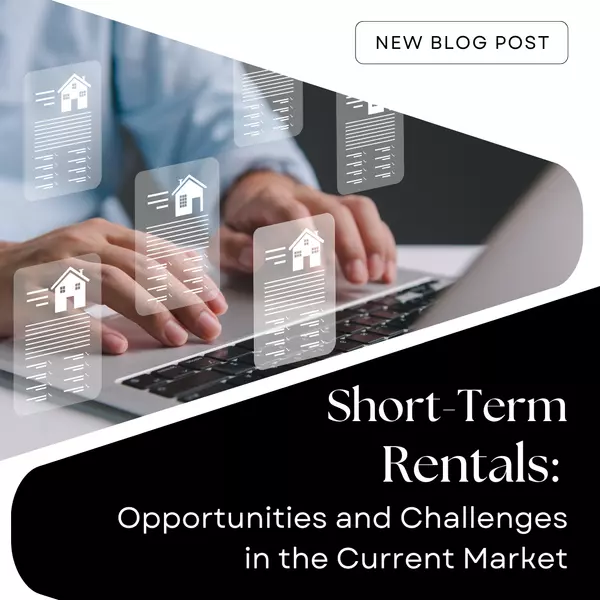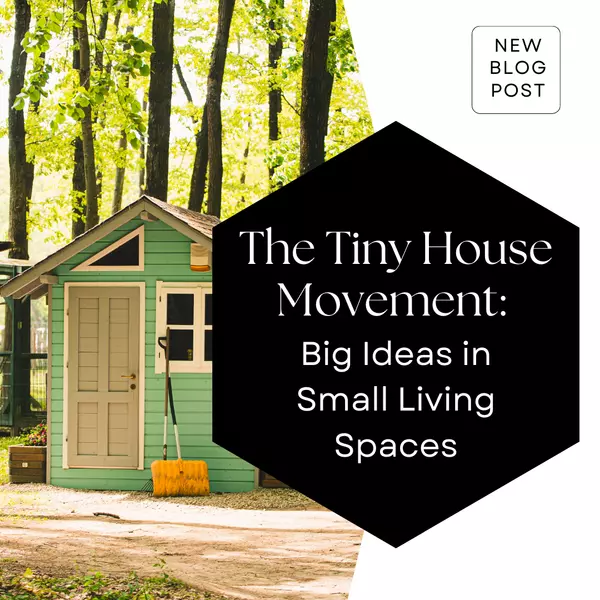
Navigating Real Estate in a High-Interest Rate Environment: Tips for Buyers and Sellers
In 2024, the real estate market is facing a new challenge: high-interest rates. As central banks combat inflation by increasing rates, both buyers and sellers must adapt to this changing environment. High-interest rates can have a significant impact on the affordability of homes, the availability of mortgages, and overall market dynamics. This blog provides valuable tips for navigating the real estate market during these challenging times. Understanding the Impact of High-Interest Rates High-interest rates can affect the real estate market in several ways: Increased Mortgage Costs: Higher interest rates mean higher monthly mortgage payments, which can reduce the amount of home buyers can afford. Decreased Buying Power: As borrowing costs rise, buyers may qualify for smaller loan amounts, potentially limiting their options. Market Slowdown: Higher interest rates can lead to a slowdown in the real estate market, as fewer people can afford to buy homes. Home Value Fluctuations: As demand decreases, home values may stabilize or even decline in some areas, affecting sellers' ability to get their desired price. Tips for Buyers Get Pre-Approved for a Mortgage: In a high-interest rate environment, getting pre-approved for a mortgage is more critical than ever. A pre-approval gives you a clear understanding of how much you can afford and shows sellers that you are a serious buyer. It also helps you lock in an interest rate, which can be beneficial if rates continue to rise. Explore Different Loan Options: High-interest rates might make traditional fixed-rate mortgages less attractive. Consider exploring other loan options, such as adjustable-rate mortgages (ARMs), which often offer lower initial rates. However, be aware of the potential for rate increases over time and assess your risk tolerance. Focus on Affordability: It's essential to focus on what you can afford rather than stretching your budget. High-interest rates mean higher monthly payments, so make sure you account for all expenses, including property taxes, insurance, and maintenance costs. Use online calculators to estimate your monthly payments and ensure they fit comfortably within your budget. Negotiate with Sellers: In a market with high-interest rates, sellers may be more willing to negotiate. Look for opportunities to negotiate the purchase price, ask for seller concessions, or request that the seller buy down your interest rate. These strategies can help make the home more affordable and offset some of the increased borrowing costs. Consider Less Competitive Markets: If you're finding it difficult to buy in a high-demand area, consider looking in less competitive markets where homes may be more affordable. Suburban or rural areas might offer more options within your budget, even with higher interest rates. Tips for Sellers Price Competitively: In a high-interest rate environment, buyers are more cautious with their spending. Pricing your home competitively can attract more potential buyers and increase the likelihood of a quick sale. Work with a real estate agent to set a realistic price based on current market conditions. Highlight Home Affordability: Emphasize features of your home that can save buyers money in the long run. Highlight energy-efficient appliances, recent renovations, and low property taxes. Providing information on potential cost savings can make your home more appealing to budget-conscious buyers. Offer Incentives: To attract buyers, consider offering incentives such as covering closing costs, providing a home warranty, or including some of the furniture and appliances. Additionally, offering to buy down the buyer's mortgage rate can be a compelling incentive that makes your home more affordable. Improve Curb Appeal: First impressions matter, especially in a competitive market. Invest in improving your home's curb appeal to attract more potential buyers. Simple upgrades like landscaping, painting the front door, and maintaining a tidy exterior can make a significant difference. Be Flexible with Showings: Make your home as accessible as possible for showings. Being flexible with showing times can accommodate more potential buyers, increasing your chances of receiving offers. Virtual tours and high-quality photos can also help attract buyers who may be unable to visit in person. General Market Tips Stay Informed: Keep up-to-date with market trends and interest rate forecasts. Understanding the broader economic context can help you make informed decisions about buying or selling. Work with a knowledgeable real estate agent who can provide insights and advice tailored to your situation. Plan for the Long Term: High-interest rates may lead to a slower market, but real estate remains a valuable long-term investment. If you're buying, focus on properties that will appreciate over time. If you're selling, be patient and prepared for longer listing times. Evaluate Your Financial Health: Whether you're buying or selling, it's crucial to assess your financial health. Ensure you have a strong credit score, a stable income, and a manageable debt-to-income ratio. These factors can influence your ability to secure favorable loan terms and navigate the market effectively. Conclusion Navigating the real estate market in a high-interest rate environment can be challenging, but with the right strategies, both buyers and sellers can achieve their goals. Buyers should focus on affordability, explore different loan options, and negotiate wisely. Sellers should price competitively, offer incentives, and highlight the value of their homes. By staying informed and planning for the long term, you can make sound real estate decisions despite the challenges of high-interest rates.

The Rise of Co-Living Spaces: A Trend for Modern Urban Dwellers
The Rise of Co-Living Spaces: A Trend for Modern Urban Dwellers In recent years, the concept of co-living has gained significant traction, emerging as a popular trend among urban dwellers seeking affordable, flexible, and community-oriented living arrangements. Co-living spaces offer a unique blend of private and communal living, catering to the needs and preferences of modern city residents. This blog explores the rise of co-living spaces, their benefits, and their impact on the real estate market. What is Co-Living? Co-living is a housing model where individuals rent private bedrooms within a shared property, often featuring communal spaces such as kitchens, living rooms, and work areas. This arrangement fosters a sense of community and shared experiences, making it distinct from traditional apartment living. Co-living spaces are typically fully furnished, offering convenience and flexibility to residents. The Appeal of Co-Living Affordability: One of the primary drivers behind the rise of co-living is affordability. In many urban areas, housing costs have skyrocketed, making it challenging for individuals, particularly young professionals and students, to find affordable living options. Co-living spaces provide a cost-effective solution by splitting rent and utility costs among multiple residents. This shared living arrangement allows individuals to enjoy well-located, well-equipped housing without the financial burden of renting an entire apartment. Flexibility: Co-living spaces offer greater flexibility compared to traditional leases. Many co-living arrangements have shorter lease terms and more lenient conditions, making it easier for residents to move in and out as their circumstances change. This flexibility is particularly appealing to those with transient lifestyles, such as digital nomads, freelancers, and those frequently relocating for work. Community and Social Interaction: In a time when social isolation is a growing concern, co-living spaces foster a sense of community and belonging. Residents have the opportunity to build relationships with like-minded individuals, participate in communal activities, and create a supportive network. This emphasis on community can significantly enhance the living experience, providing emotional and social benefits that are often missing in traditional rental arrangements. Convenience and Amenities: Co-living spaces are designed to offer convenience and a high standard of living. Properties are typically fully furnished and equipped with modern amenities such as high-speed internet, cleaning services, and shared recreational areas. Some co-living operators also organize events, workshops, and social gatherings, further enhancing the living experience. This level of service and convenience makes co-living an attractive option for busy urban dwellers. The Impact on Real Estate Market The rise of co-living spaces is reshaping the real estate market in several ways: Increased Demand for Flexible Housing: As more individuals seek flexible and affordable housing options, the demand for co-living spaces is on the rise. Real estate developers and investors are recognizing this trend and increasingly incorporating co-living projects into their portfolios. This shift is particularly evident in densely populated urban areas where housing affordability is a significant issue. Redefining Urban Living: Co-living spaces are redefining urban living by promoting a more communal and sustainable lifestyle. These spaces often emphasize shared resources, reducing the overall environmental footprint of residents. This sustainable approach aligns with the values of many modern urban dwellers who prioritize eco-friendly living and community engagement. Adapting to Changing Lifestyles: The flexibility and convenience of co-living make it well-suited to the evolving lifestyles of urban residents. With the rise of remote work, freelance careers, and the gig economy, many people are no longer tied to long-term leases or specific locations. Co-living spaces offer the adaptability needed to accommodate these changing lifestyles, providing a sense of stability in a rapidly shifting world. Innovation in Real Estate Development: The popularity of co-living is driving innovation in real estate development. Developers are exploring creative design solutions to maximize the use of space while fostering community interaction. This includes designing multifunctional common areas, integrating smart home technology, and creating aesthetically pleasing environments that appeal to a diverse range of residents. The Future of Co-Living The co-living trend shows no signs of slowing down. As urbanization continues and housing affordability remains a challenge, co-living spaces are likely to become an increasingly important part of the housing market. Future developments in co-living will likely focus on enhancing the quality of communal living, incorporating sustainable practices, and leveraging technology to improve the resident experience. Moreover, the demographic appeal of co-living is expanding. While it initially gained popularity among young professionals and students, co-living spaces are now attracting a broader audience, including empty nesters, retirees, and even small families. This diversity is expected to drive further growth and innovation in the co-living sector. Conclusion The rise of co-living spaces represents a significant shift in urban housing preferences, offering a viable solution to the challenges of affordability, flexibility, and social connection. For modern urban dwellers, co-living provides an appealing alternative to traditional rental arrangements, combining the benefits of community living with the convenience of fully serviced homes. As the real estate market continues to evolve, co-living is poised to play a crucial role in shaping the future of urban living, catering to the diverse needs and lifestyles of city residents.

Renting vs. Buying in 2024: Making the Right Choice in a Dynamic Market
Renting vs. Buying in 2024: Making the Right Choice in a Dynamic Market As we move further into 2024, the real estate market continues to evolve, influenced by economic conditions, interest rates, and shifting lifestyle preferences. One of the most significant decisions individuals face in this dynamic market is whether to rent or buy a home. Each option has its pros and cons, and the right choice depends on various factors, including financial stability, long-term goals, and personal circumstances. This blog explores the key considerations for renting versus buying in 2024 to help you make an informed decision. Financial Considerations Renting: Renting a home often requires a lower upfront financial commitment compared to buying. Typically, renters need to cover a security deposit, the first month's rent, and potentially a broker's fee. This makes renting an attractive option for those who may not have substantial savings or are looking to avoid the large down payment required for buying a home. Monthly rent payments can be predictable and easier to budget for, although it's essential to consider potential rent increases, especially in competitive markets. Renting also eliminates the financial responsibilities associated with home maintenance, repairs, property taxes, and homeowner's insurance. Buying: Buying a home, on the other hand, involves significant upfront costs, including a down payment, closing costs, and fees for inspections and appraisals. However, homeownership can be a valuable long-term investment. As you pay down your mortgage, you build equity in your home, which can be a powerful financial asset. Additionally, homeowners may benefit from potential property value appreciation over time. Homeownership also comes with tax benefits, such as deductions for mortgage interest and property taxes. However, buyers must be prepared for ongoing expenses like maintenance, repairs, homeowners' association fees, and higher insurance premiums. Market Conditions Renting: In 2024, rental markets in many urban areas remain competitive, with high demand driving up rental prices. However, renting offers flexibility, making it easier to relocate for job opportunities or lifestyle changes without the commitment of owning property. This can be particularly advantageous in a fluctuating job market or if you anticipate significant life changes in the near future. Buying: The housing market in 2024 is experiencing a mix of stability and volatility. While interest rates have seen fluctuations, they remain relatively low compared to historical averages, making mortgages more affordable for many buyers. However, housing inventory in some areas remains tight, leading to competitive bidding and higher home prices. For those considering buying, it's crucial to stay informed about local market conditions and trends. Working with a knowledgeable real estate agent can provide insights into market dynamics and help you make a strategic decision. Lifestyle and Long-Term Goals Renting: Renting offers greater flexibility and freedom from long-term commitments. This can be ideal for individuals who value mobility, are exploring different neighborhoods, or prefer the convenience of a landlord handling maintenance and repairs. Renting also allows you to live in desirable areas that might be unaffordable to buy into. Buying: Homeownership aligns well with long-term stability and the desire to establish roots in a community. Owning a home provides the freedom to customize and renovate your living space to suit your preferences. It can also foster a sense of pride and accomplishment. For families, buying a home in a good school district can provide educational benefits for children. Additionally, homeownership can serve as a forced savings plan, as mortgage payments contribute to building equity. Economic Factors Renting: Economic uncertainty can make renting a more attractive option, as it avoids the risks associated with home value depreciation. In times of economic downturn, renters are not tied to a depreciating asset and can relocate more easily if needed. Buying: Conversely, in a stable or growing economy, buying a home can be a wise financial decision. Real estate often appreciates over time, providing a hedge against inflation and a potential increase in net worth. However, buyers should be mindful of economic indicators and consider the potential risks of purchasing in a volatile market. Conclusion The decision to rent or buy a home in 2024 is multifaceted, requiring careful consideration of financial, market, lifestyle, and economic factors. Renting offers flexibility and lower upfront costs, making it suitable for those who prioritize mobility and lower immediate financial commitment. On the other hand, buying a home can be a valuable long-term investment, providing stability, equity growth, and potential tax benefits. Ultimately, the right choice depends on your individual circumstances, long-term goals, and current market conditions. Consulting with real estate professionals, financial advisors, and conducting thorough research can help you navigate the complexities of the 2024 real estate market and make the best decision for your future. Whether you choose to rent or buy, understanding the pros and cons of each option will empower you to make a choice that aligns with your lifestyle and financial aspirations.
Recent Posts











